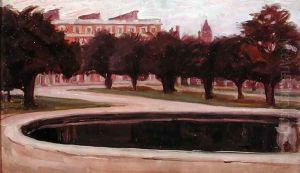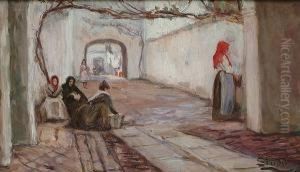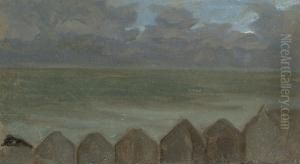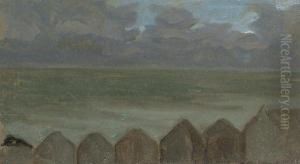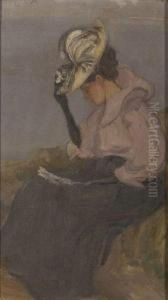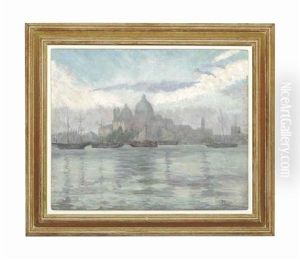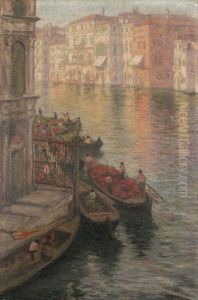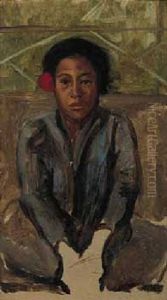Arthur Haythorne Studd Paintings
Arthur Haythorne Studd was a notable British painter and etcher, born in 1863. Coming from a wealthy family, he initially embarked on a path that was not directly related to the arts. Despite this, his passion for painting soon became the centerpiece of his life, leading him to pursue a career that would see him contributing significantly to the British art scene of the late 19th and early 20th centuries.
Studd's early education in art took a significant turn when he decided to study at the Slade School of Fine Art in London, a leading art school that has nurtured many prominent British artists. His time at the Slade was crucial in shaping his artistic direction, grounding him in the fundamentals of painting and drawing, and exposing him to the vibrant art scene in London. Studd was particularly influenced by the works of James McNeill Whistler, a connection that would later inspire him to explore the tonalities and subtleties of color in his own work.
After his studies, Studd became part of the New English Art Club, an influential group of artists that sought to challenge the traditional approaches to art promoted by institutions like the Royal Academy. Through this affiliation, Studd was able to exhibit his works alongside other progressive artists, gaining recognition for his unique style and approach to painting. His works often depicted landscapes and scenes from his travels, characterized by a deft use of light and shadow, and a remarkable ability to capture the essence of his subjects.
In the latter part of his career, Studd spent significant time in France, particularly in Brittany and Normandy, where he was deeply inspired by the French landscape and the local way of life. This period was marked by a prolific output of paintings that showcased his evolving style, increasingly characterized by bold experimentation with color and form. His French landscapes are considered some of his finest works, reflecting a mature artist who was fully in command of his medium.
Arthur Haythorne Studd's contribution to British art was cut short when he died in 1919. Despite his relatively brief career, his work left a lasting impact, particularly in the way he captured landscapes and scenes from his travels. Today, his paintings are celebrated for their technical skill and unique vision, securing his place among the notable British artists of his time.
